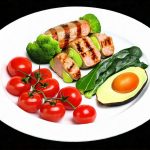Cramping episodes are a surprisingly common experience for many people, often dismissed as simply “part of life.” While occasional cramping can be attributed to various factors like dehydration, stress, or exercise, persistent or severe cramping could indicate underlying issues – and sometimes, those issues relate directly to the way we combine foods during meals. It’s not always about what you eat, but how you eat it. Our digestive systems are complex ecosystems, and overloading them with certain combinations can lead to inefficient digestion, gas production, bloating, and ultimately, painful cramping. Understanding these potential interactions can empower individuals to make informed dietary choices and minimize discomfort.
The human body is remarkably adaptable, but also sensitive. When we rapidly combine foods from different food groups – particularly those that digest at vastly different rates – the digestive process gets thrown off balance. For example, combining simple carbohydrates with fats or proteins can lead to fermentation in the gut as the quicker-digesting carbs sit waiting for the slower digesting components to catch up. This fermentation produces gas, which triggers inflammation and cramping. It’s not a one-size-fits-all scenario; individual tolerances vary greatly based on factors such as gut health, enzyme production, and overall lifestyle. However, recognizing patterns between food combinations and cramping episodes can be an invaluable step towards improved digestive wellbeing.
Food Combination Challenges & Digestive Stress
The concept of food combining isn’t new; it originates from early 20th-century nutritional theories that suggested specific food pairings optimize digestion. While the original principles have evolved and been refined, the core idea remains relevant: certain combinations place undue stress on the digestive system. This stress doesn’t necessarily mean a complete avoidance of these combinations, but rather an awareness of how they might affect your body. A key component is understanding the different rates at which foods are digested.
- Proteins require stomach acid and enzymes to break down – a relatively slow process.
- Carbohydrates begin digestion in the mouth with salivary amylase and continue in the small intestine, generally faster than protein digestion.
- Fats take the longest to digest, requiring bile from the gallbladder and pancreatic lipase.
Combining foods that necessitate drastically different digestive environments simultaneously forces the body to work harder, potentially leading to incomplete breakdown of food, increased fermentation, and ultimately, cramping. For example, pairing a steak (high in protein) with mashed potatoes and gravy (primarily carbohydrates and fats) creates a complex digestive scenario where each component demands distinct enzymatic action. This isn’t inherently harmful for everyone, but it can significantly increase the likelihood of discomfort for those with sensitive digestion or pre-existing gut issues.
The impact isn’t limited to speed; it also involves the digestive environment required. Proteins require an acidic environment, while carbohydrates benefit from a more alkaline one. Mixing these in large quantities can neutralize digestive enzymes and hinder efficient breakdown. This is why some individuals find they tolerate protein sources better when consumed separately or with non-starchy vegetables, which don’t interfere as much with the necessary acidity for protein digestion. Prioritizing mindful food combinations can be a proactive step towards improved gut health and reduced cramping.
Identifying Common Culprits
Certain food pairings are more frequently associated with digestive distress than others. Fruit, especially sweet fruits, combined with meals is a common trigger for many individuals. This is because fruit digests very quickly and can ferment in the stomach if held up by slower-digesting foods. The resulting gas production often leads to bloating and cramping. Similarly, combining milk (or dairy alternatives) with grains or sugars can be problematic for those lactose intolerant or sensitive to dairy proteins, leading to similar symptoms.
Another common issue is pairing starchy carbohydrates with acidic fruits. Think orange juice with toast or a banana alongside cereal. The acidity of the fruit interferes with starch digestion, causing fermentation and discomfort. Furthermore, combining large amounts of protein and fat with sugar can slow down digestion considerably, increasing the risk of bloating and cramping. This is why heavy, rich meals often leave people feeling sluggish and uncomfortable. Recognizing these patterns in your own diet is the first step towards making adjustments.
The Role of Gut Health & Enzyme Deficiency
Underlying gut health plays a significant role in how well we tolerate different food combinations. A healthy microbiome – the community of bacteria residing in our intestines – aids digestion, reduces inflammation, and strengthens the intestinal barrier. When this balance is disrupted (through factors like antibiotics, stress, or poor diet), it can exacerbate sensitivities to certain food pairings. Individuals with conditions like Irritable Bowel Syndrome (IBS) or Small Intestinal Bacterial Overgrowth (SIBO) are particularly susceptible to these effects.
Enzyme deficiencies also contribute significantly. Lactase deficiency leads to lactose intolerance, while insufficient pancreatic enzymes can hinder the breakdown of fats and proteins. If your body lacks sufficient enzymes to efficiently digest certain foods, combining them with other food groups only compounds the problem. Supplementing with digestive enzymes may offer some relief for enzyme deficiencies but should be discussed with a healthcare professional before starting any new regimen. Addressing gut health through diet and lifestyle changes is often more effective long-term than simply managing symptoms. Recognizing food combining fears can help alleviate digestive issues as well.
Practical Strategies for Minimizing Cramping
The goal isn’t necessarily to eliminate all problematic food combinations, but to become aware of your individual triggers and make informed choices. Here are some practical strategies:
- Keep a Food Diary: Track what you eat, when you eat it, and any associated symptoms. This helps identify patterns between specific food pairings and cramping episodes.
- Prioritize Single-Food Meals (occasionally): While not always feasible or desirable, focusing on one main food group per meal can give your digestive system a break. For example, having a protein-focused lunch with steamed vegetables instead of a complex combination meal.
- Chew Thoroughly: Proper chewing aids digestion by breaking down food into smaller particles and stimulating enzyme production in the mouth.
- Stay Hydrated: Water is essential for optimal digestion. Drink plenty of water throughout the day, especially before, during, and after meals.
- Consider Probiotics & Prebiotics: These support a healthy gut microbiome, improving overall digestive function.
- Manage Stress: Stress negatively impacts digestion. Incorporate stress-reducing techniques like yoga, meditation, or deep breathing exercises into your routine.
These steps are about listening to your body and making adjustments based on what works best for you. There is no universal solution; it’s a journey of self-discovery and mindful eating. Remember that consistent attention to these principles can significantly improve digestive comfort and reduce the frequency of cramping episodes, even when dealing with irregular mealtimes. If you experience cramping after consuming cold food, look into cold food consumption as well. And be mindful of overscheduling, as it can play a role in digestive issues.


















